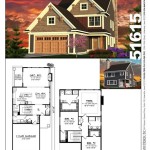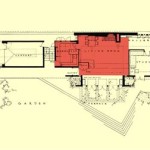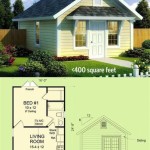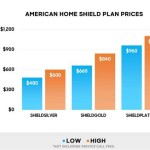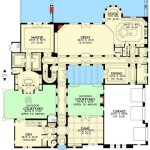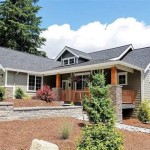Home Plans With Cost To Build: A Comprehensive Guide
Embarking on the journey of building a new home is a significant undertaking, requiring careful planning and diligent research. A crucial element in this process is understanding the home plans and the associated costs to build. This article will provide a comprehensive guide to navigating the intricacies of home plans and cost estimation, equipping potential homeowners with the necessary knowledge to make informed decisions.
Understanding Home Plans: A Foundation for Construction
Home plans, also known as blueprints, serve as the foundational documents for the entire construction process. These detailed drawings and specifications communicate the design intent to the construction crew, ensuring that the finished product aligns with the homeowner's vision and meets all applicable building codes. A comprehensive set of home plans typically includes several key components, each providing specific information crucial for accurate construction and cost estimation.
Architectural Plans: These plans depict the overall aesthetic and layout of the home. They include floor plans, elevation drawings (showing the exterior views of the house from different sides), and roof plans. Floor plans illustrate the arrangement of rooms, dimensions, window and door locations, and other key architectural features. Elevation drawings provide a visual representation of the exterior appearance, including materials, finishes, and landscaping elements. Roof plans detail the roof structure, pitch, and drainage system.
Structural Plans: Focusing on the structural integrity of the building, these plans outline the foundation, framing, and load-bearing components. They specify the type and size of materials used, such as concrete, steel, and wood, and detail how these materials are connected to ensure the building's stability. Structural plans are essential for ensuring that the home can withstand various environmental forces, such as wind, snow, and seismic activity.
Electrical Plans: These plans illustrate the electrical system of the home, including the location of outlets, switches, lighting fixtures, and electrical panels. They also specify the wiring type and gauge, circuit configurations, and grounding system. Electrical plans must comply with local electrical codes to ensure safety and prevent electrical hazards.
Plumbing Plans: Detailing the plumbing system, these plans show the location of water supply lines, drain lines, fixtures (such as sinks, toilets, and showers), and water heaters. They specify the pipe material, size, and slope, as well as the location of cleanouts and vents. Plumbing plans must adhere to local plumbing codes to ensure proper water flow and sanitation.
Mechanical Plans (HVAC): These plans cover the heating, ventilation, and air conditioning (HVAC) system. They show the location of furnaces, air conditioners, ductwork, and ventilation fans. Mechanical plans specify the type and size of equipment, airflow rates, and energy efficiency standards. Proper HVAC design is crucial for maintaining comfortable indoor temperatures and ensuring good air quality.
Site Plan: This plan shows the location of the house on the property, including setbacks from property lines, easements, and utility connections. It also depicts the landscaping, driveway, and other site features. The site plan is essential for obtaining building permits and ensuring compliance with local zoning regulations.
A well-developed set of home plans is critical for accurate cost estimation and efficient construction. Ambiguous or incomplete plans can lead to misunderstandings, errors, and cost overruns. Therefore, it is essential to work with experienced architects and designers who can create comprehensive and detailed plans that meet the homeowner's needs and the requirements of local building codes.
Estimating the Cost to Build: Factors and Considerations
Determining the cost to build a home is a complex process influenced by various factors. An accurate cost estimate is crucial for budgeting, securing financing, and making informed decisions throughout the construction process. Several key elements contribute to the overall cost, and understanding these factors is essential for developing a realistic budget.
Size and Complexity of the Home: The square footage and architectural complexity of the home are primary drivers of cost. Larger homes naturally require more materials and labor, increasing the overall price. Complex designs with intricate rooflines, custom layouts, and unique architectural features also tend to be more expensive to build than simpler designs.
Materials: The choice of materials significantly impacts the cost. High-end materials, such as imported tiles, solid hardwood flooring, and custom-built cabinetry, can substantially increase the budget. Conversely, using more economical materials can help to reduce expenses. Material costs fluctuate depending on market conditions and availability, so it is essential to obtain current quotes from suppliers.
Labor Costs: Labor represents a substantial portion of the total construction cost. The cost of labor varies depending on the region, the skill level of the workers, and the complexity of the project. It is essential to obtain multiple bids from qualified contractors to ensure competitive pricing and quality workmanship. Labor costs typically include wages, benefits, and insurance.
Site Conditions: The characteristics of the building site can significantly impact the cost. Sites with challenging topography, poor soil conditions, or the presence of rock or groundwater may require additional excavation, grading, and foundation work, increasing the overall expense. Environmental regulations and permitting requirements can also add to the cost, particularly in environmentally sensitive areas.
Finishes and Fixtures: The selection of finishes and fixtures, such as appliances, plumbing fixtures, lighting fixtures, and countertops, can significantly influence the budget. High-end appliances and custom-designed fixtures can substantially increase the cost. Conversely, choosing standard models and readily available materials can help to reduce expenses. It is essential to prioritize selections based on budget constraints and personal preferences.
Permits and Fees: Building permits and other associated fees are required by local governments to ensure compliance with building codes and zoning regulations. These fees vary depending on the location and the scope of the project. It is essential to factor in these costs when developing the budget. Permit fees typically cover inspections and plan reviews.
Contingency Fund: It is prudent to include a contingency fund in the budget to cover unexpected expenses or unforeseen problems that may arise during construction. A contingency fund of 5-10% of the total project cost is generally recommended. This fund provides a financial buffer to address issues such as hidden site conditions, material price increases, or design changes.
Obtaining accurate cost estimates requires careful planning and research. Homeowners should work closely with experienced contractors and architects to develop detailed cost breakdowns based on the specific plans and specifications of the project. Multiple bids should be obtained to ensure competitive pricing and to identify potential cost-saving opportunities.
Key Considerations for Selecting Home Plans
Selecting the right home plans is a crucial step in the home building process. The chosen plans should align with the homeowner's needs, budget, and lifestyle, while also meeting the requirements of the building site and local regulations. Several key considerations should be taken into account when evaluating different home plan options.
Lifestyle and Needs: The floor plan should be designed to accommodate the homeowner's lifestyle and needs. Consider the number of bedrooms and bathrooms required, the layout of the living spaces, and the need for specialized rooms, such as a home office, a media room, or a workshop. The flow of the floor plan should be intuitive and functional, promoting comfortable living and efficient use of space.
Budget: The budget is a primary constraint in the home building process. It is essential to choose home plans that are compatible with the allocated budget. Simpler designs with standard materials and finishes tend to be more cost-effective than complex designs with high-end materials and custom features. It is important to realistically assess affordability and to prioritize features based on budget constraints.
Building Site: The characteristics of the building site can influence the choice of home plans. Sites with challenging topography, restrictive setbacks, or environmental constraints may require specific design considerations. The home plans should be adaptable to the site conditions and should minimize the need for extensive site preparation or modifications.
Future Needs: Consider potential future needs when selecting home plans. Will the family size grow? Will aging in place be a factor? The home plans should be flexible enough to accommodate future changes and needs, such as adding an addition, converting a room, or installing accessibility features.
Energy Efficiency: Energy efficiency is an increasingly important consideration for homeowners. Choose home plans that incorporate energy-efficient design principles, such as proper insulation, energy-efficient windows and doors, and high-efficiency HVAC systems. These features can reduce energy consumption and lower utility bills over the long term.
Resale Value: While the primary focus should be on meeting the current needs and preferences of the homeowner, it is also prudent to consider the potential resale value of the home. Choose home plans that are appealing to a broad range of potential buyers and that incorporate features that are in demand in the local market.
Professional Consultation: It is highly recommended to consult with experienced architects and builders when selecting home plans. These professionals can provide valuable insights and guidance, helping homeowners to choose plans that are appropriate for their needs, budget, and building site. They can also assist with modifications and customizations to ensure that the plans meet the specific requirements of the project.
Careful consideration of these factors will help homeowners to select home plans that are well-suited to their needs and that will result in a comfortable, functional, and valuable home.

How Much Do House Plans Cost Drummond

Est House Plans To Build Simple With Style Blog Eplans Com

Building On The Affordable House Plans Of 2024 Houseplans Blog Com

Building On The Affordable House Plans Of 2024 Houseplans Blog Com

Affordable House Plans Our Est To Build Blog Homeplans Com

To Build Home Plan 4 Ways Save Big The House Designers

Est House Plans To Build Simple With Style Blog Eplans Com

Get The Lowdown On Cost To Build Estimates Houseplans Blog Com

16 Cutest Tiny Home Plans With Cost To Build Small Bungalow House

Affordable House Plans Our Est To Build Blog Homeplans Com

